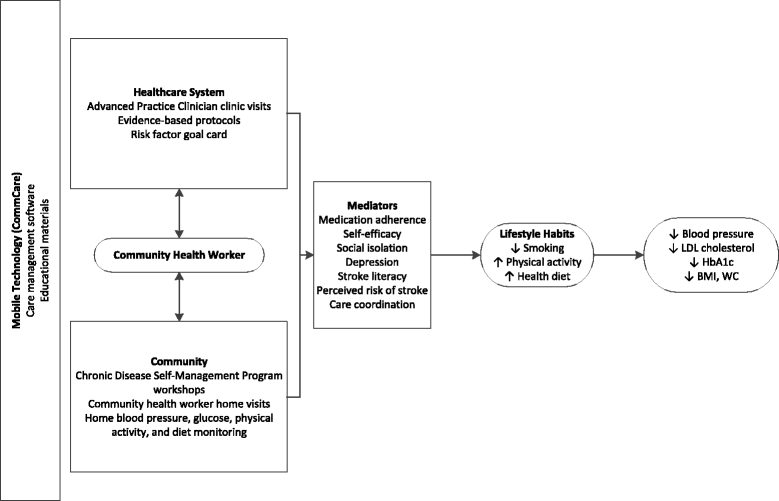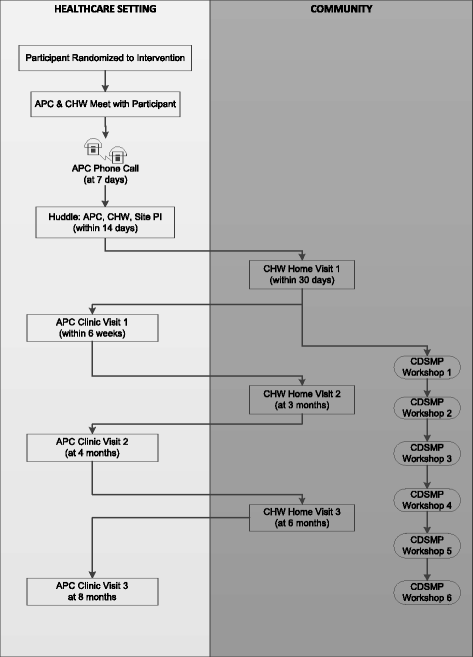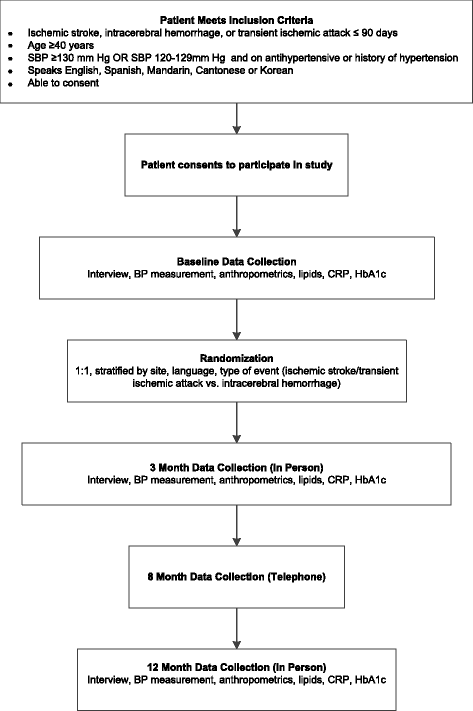Randomized controlled trial of a coordinated care intervention to improve risk factor control after stroke or transient ischemic attack in the safety net: Secondary stroke prevention by Uniting Community and Chronic care model teams Early to End Disparities (SUCCEED)
- PMID: 28166784
- PMCID: PMC5294765
- DOI: 10.1186/s12883-017-0792-7
Randomized controlled trial of a coordinated care intervention to improve risk factor control after stroke or transient ischemic attack in the safety net: Secondary stroke prevention by Uniting Community and Chronic care model teams Early to End Disparities (SUCCEED)
Abstract
Background: Recurrent strokes are preventable through awareness and control of risk factors such as hypertension, and through lifestyle changes such as healthier diets, greater physical activity, and smoking cessation. However, vascular risk factor control is frequently poor among stroke survivors, particularly among socio-economically disadvantaged blacks, Latinos and other people of color. The Chronic Care Model (CCM) is an effective framework for multi-component interventions aimed at improving care processes and outcomes for individuals with chronic disease. In addition, community health workers (CHWs) have played an integral role in reducing health disparities; however, their effectiveness in reducing vascular risk among stroke survivors remains unknown. Our objectives are to develop, test, and assess the economic value of a CCM-based intervention using an Advanced Practice Clinician (APC)-CHW team to improve risk factor control after stroke in an under-resourced, racially/ethnically diverse population.
Methods/design: In this single-blind randomized controlled trial, 516 adults (≥40 years) with an ischemic stroke, transient ischemic attack or intracerebral hemorrhage within the prior 90 days are being enrolled at five sites within the Los Angeles County safety-net setting and randomized 1:1 to intervention vs usual care. Participants are excluded if they do not speak English, Spanish, Cantonese, Mandarin, or Korean or if they are unable to consent. The intervention includes a minimum of three clinic visits in the healthcare setting, three home visits, and Chronic Disease Self-Management Program group workshops in community venues. The primary outcome is blood pressure (BP) control (systolic BP <130 mmHg) at 1 year. Secondary outcomes include: (1) mean change in systolic BP; (2) control of other vascular risk factors including lipids and hemoglobin A1c, (3) inflammation (C reactive protein [CRP]), (4) medication adherence, (5) lifestyle factors (smoking, diet, and physical activity), (6) estimated relative reduction in risk for recurrent stroke or myocardial infarction (MI), and (7) cost-effectiveness of the intervention versus usual care.
Discussion: If this multi-component interdisciplinary intervention is shown to be effective in improving risk factor control after stroke, it may serve as a model that can be used internationally to reduce race/ethnic and socioeconomic disparities in stroke in resource-constrained settings.
Trial registration: ClinicalTrials.gov Identifier NCT01763203 .
Keywords: Biomarkers; Blood pressure; Community health worker; Coordinated care; Disparities; Intracerebral hemorrhage; NINDS Common Data Elements; Stroke; Transient ischemic attack; Vascular risk.
Figures





References
Publication types
MeSH terms
Associated data
Grants and funding
LinkOut - more resources
Full Text Sources
Other Literature Sources
Medical
Research Materials
Miscellaneous

